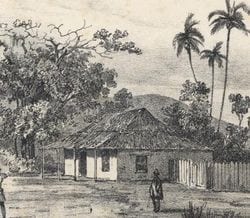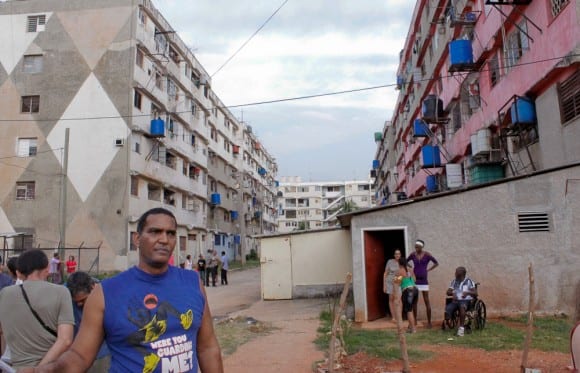Cuba’s Architectural Demons
By Ariel Glaria

HAVANA TIMES — Nothing says more about what we once were, what we are or what we want to become than our architecture.
The first dwellings built by the Spanish in Cuba were modifications of the huts used by aboriginals which adapted these to their own customs. More resistant materials and advanced techniques began to be used later, allowing for the development of what is known as colonial architecture today.
Cuba’s hot temperatures and bright sun inspired some of the most original elements that characterize this period in history. The widespread use of cement and reinforced concrete in the early 20th century gave rise to the eclectic styles we appreciate today (though their current condition is somewhat depressing).
This architectural legacy is kept alive by the sophisticated wrought-iron designs, the many long and well-ventilated corridors or porches found in public spaces and the elegant promenades, shaded by trees and dappled by sunlight.

A truly modern architecture, however, would not begin to be developed in Cuba until the 1950s. These eminently Cuban styles would then emerge in efforts to improve the country’s urban environments.
The new architecture would find some of its most original designs in the colonial past and adapt these using new technologies and precepts borrowed from modern, international architecture.
I do not wish to idealize any one period in history – only to highlight what I find fascinating and surprising in these works. The quality of these buildings, the meticulous finishing touches, the clever use of urban spaces, where they were built and integrated into the surroundings, are features missing from the construction work undertaken over recent decades.
Forsaking the creative and constructive legacy passed on to us, we built the ugly Soviet-styled multi-apartment buildings, whose pre-fabricated panels spread to every corner of the country to introduce a jarring element in rural and urban settings. These buildings, in addition, give the impression that its inhabitants are trapped inside them.
These are but the tip of the iceberg. Their massive proliferation, I know, was a response to a specific need. Now, I ask, given the resources invested in these, couldn’t they have built something better?

Perhaps no one even noticed. Their construction, across the entire country, not only frustrated the creative capacities of workers, technicians and architects, it also laid the foundations of a more widespread form of inefficiency, paving the way to cut corners, the imposition of taxes through a collectivist and depersonalized demagogy (good at building monuments, statues and squares for political functions).
The unimaginative designs, the poor quality of the construction work and the little importance given the buildings’ finishing had an impact on immediate surroundings. The practice became generalized and, today, we can see its results everywhere.
In addition, the aesthetic that defines these building complexes have seeped into our collective unconscious. We catch sight of it in our spoken language, our poor taste and perhaps even in the lack of civic values we are concerned about today.
Many of the architects who impelled the development of modern architecture in Cuba in the 1950s, it’s true, left the country, but their works, and the concepts behind them, have stayed with us and belong to us.
We are standing at the threshold of a new beginning. The way forward is in our hands, and before us.





